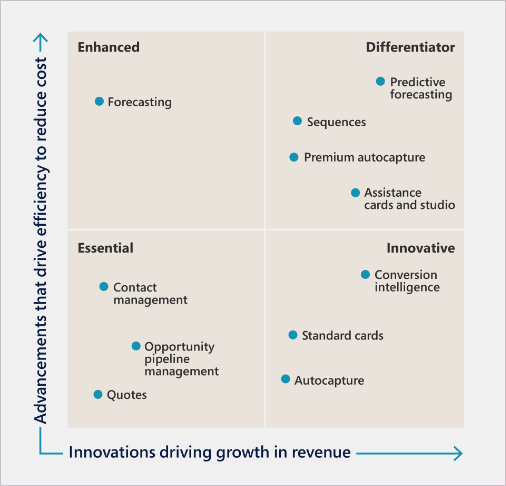Nota
L'accesso a questa pagina richiede l'autorizzazione. È possibile provare ad accedere o modificare le directory.
L'accesso a questa pagina richiede l'autorizzazione. È possibile provare a modificare le directory.
You learned in earlier sections of this guide that digital transformation—the process of using digital technologies to create new or modify existing business processes, products, and customer experiences—can help you improve your efficiency, agility, innovation, and competitiveness. But digital transformation isn't easy. It requires a clear vision, a strategic approach, and a constant adaptation to changing needs and expectations.
One of the challenges of digital transformation is to prioritize and communicate your app features and changes. You might have a long and growing list of requirements and requests from your business, IT, and users. But how do you decide which ones are more important and valuable? How do you align them with your digital transformation goals and your business process maturity? How do you show your stakeholders the benefits and impact of your app development and delivery?
A transformation map can help you with these questions. It's a tool that shows how your app features and changes relate to your transformation objectives and your competitive advantage.
You can customize the four quadrants of the transformation map to match your own goals and ambitions for your process, or use the template we provide here. Plot all the features, changes, and cloud product capabilities on the map. This way, you can assess the current state and the desired state of your business process implementation.
For example, a sales system that only has the basic features of contact management and opportunity management might be considered essential. But a system that uses AI-driven insights and advanced forecasting might be a differentiator that gives you a competitive advantage in your industry.
A transformation map can also help you create a dashboard for your stakeholders. It can show them how the requirements and features align with your transformation goals. You can use it to plan and prioritize your app development and delivery.
But remember, a transformation map isn't a static document. It can change over time as your business and your industry evolve. A feature that's a differentiator today might become essential tomorrow. And a feature that's ahead of time today might become an innovator or a differentiator soon. You should review and update your transformation map for each phase, product release, pivot, or strategic change in your business.
Next steps
- Review the overview of driving app value through digital transformation
- Learn how Success By Design helps you define the approach to digital transformation
- Embrace the mindset of constant change and learn about the change streams for digital transformation
- Find out how to use phases and increments to drive app value
- Understand the minimal viable product strategy for digital transformation
- Learn how to drive expansion through digital transformation
- Use the checklist to make sure you're driving app value
- Read the case study to see how a real customer drove app value through digital transformation
